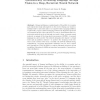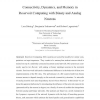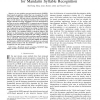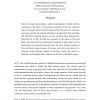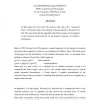NN
2011
Springer
13 years 10 months ago
2011
Springer
Neurodynamical models of working memory (WM) should provide mechanisms for storing, maintaining, retrieving, and deleting information. Many models address only a subset of these a...
AGI
2011
13 years 11 months ago
2011
Human intelligence consists largely of the ability to recognize and exploit structural systematicity in the world, relating our senses simultaneously to each other and to our cogni...
105
click to vote
NGC
2010
Springer
14 years 2 months ago
2010
Springer
A key to overcoming the limitations of classical artificial intelligence and to deal well with enormous amounts of information might be brain-like computing in which distributed re...
INTERSPEECH
2010
14 years 2 months ago
2010
A new recurrent neural network based language model (RNN LM) with applications to speech recognition is presented. Results indicate that it is possible to obtain around 50% reduct...
NECO
2010
14 years 5 months ago
2010
Abstract: Reservoir Computing (RC) systems are powerful models for online computations on input sequences. They consist of a memoryless readout neuron which is trained on top of a ...
ITNG
2010
IEEE
14 years 5 months ago
2010
IEEE
The ever-growing use of the Internet comes with a surging escalation of communication and data access. Most existing intrusion detection systems have assumed the one-size-fits-all...
TNN
1998
14 years 7 months ago
1998
Abstract—A new modular recurrent neural network (MRNN)based speech-recognition method that can recognize the entire vocabulary of 1280 highly confusable Mandarin syllables is pro...
NN
1998
Springer
14 years 7 months ago
1998
Springer
Learning long-term temporal dependencies with recurrent neural networks can be a difficult problem. It has recently been shown that a class of recurrent neural networks called NA...
IJON
1998
14 years 7 months ago
1998
Paper [1] aimed at providing a unified presentation of neural network architectures. We show in the present comment (i) that the canonical form of recurrent neural networks presen...
IJON
1998
14 years 7 months ago
1998
In their paper [1], Tsoi and Tan present what they call a "canonical form", which they claim to be identical to that proposed in Nerrand et al [2]. They also claim that ...

